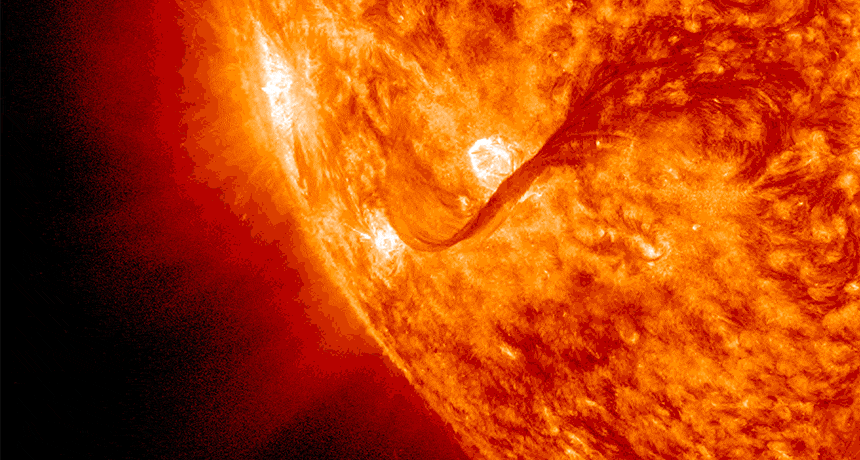Space weather forecast: Big storms ahead
The sun hurls giant plasma cannonballs at the Earth. What’s the worst that can happen?
In the darkest hours of March 13, 1989, people all across North America noticed something odd overhead. They called friends and neighbors, asking the same question.
Have you seen the sky?
From New York to Florida, Cuba and Honduras, people saw the same strange thing — long streams of light. Often reported as reddish in color, these streams twisted and danced in the northern sky. Some people feared that a recently launched spacecraft had exploded. Residents of Amarillo, Texas, called the fire department. The glow looked like a distant fire, burning toward the city.
It wasn’t a fire. It was a natural phenomenon called an aurora. Auroras are common near the North and South Pole. But they rarely reach skies over southern U.S. states, such as Texas.
Something powerful — and extraterrestrial — had pushed these “northern lights” south.
In the Canadian province of Quebec, the overhead light show was just the beginning. The same event that caused the auroras also triggered a strong electric current to flow underground. That current ran into buried electrical wires. The resulting jolt overloaded the electric power grid. That’s the network of generators and wires that carry electricity.
At 2:44 a.m., lights started to go out. A minute later, the entire province of Quebec was dark. Electric-heating systems stopped working. So did elevators, even between floors. Skyscrapers in Montreal turned into looming shadows. Nine million people were powerless. That morning, the subway and airport were shut. The power company issued a statement: “All those motorists sitting at traffic lights cursing should realize that it is not [our] fault.”
